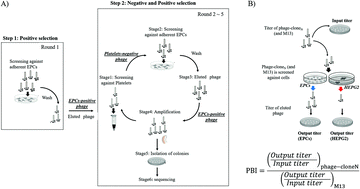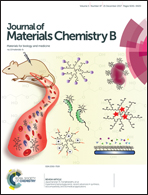Novel peptides for small-caliber graft functionalization selected by a phage display of endothelial-positive/platelet-negative combined selection†
Abstract
Coronary artery disease is the leading cause of death in the world. While transplantation of autologous vessels remains a viable option, often patients may have a limited availability of suitable veins/arteries. Nowadays, despite the efforts of research made towards developing synthetic vessels, the small-diameter conduits have not fully met clinical needs. Surface modifications to mimic the vascular wall or seeding of endothelial cells within the lumen of the graft prior implantation are common approaches. However, due to the difficulties of the seeding methods, the immobilization of short recognition sequences presenting cell binding motifs remains one of the most promising strategies. In this paper, about 600 endothelial cell specific peptides have been reviewed and compared with three sequences selected by an improved phage display biopanning protocol. Indeed, the standard protocol has been ameliorated by (i) a positive selection of Endothelial Progenitor Cell (EPC)-binding phage clones, (ii) a negative selection against platelet binding phage clones, and (iii) the introduction of the phage binding index (PBI), which is a target affinity scoring function. The selected peptides were used to modify the ePTFE surface, and our results indicated that the peptide modified surfaces may be useful in solving the problems of small calibre grafts.



 Please wait while we load your content...
Please wait while we load your content...